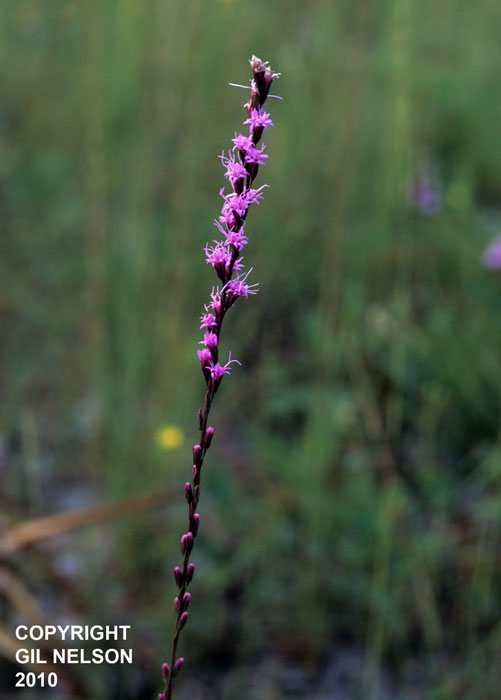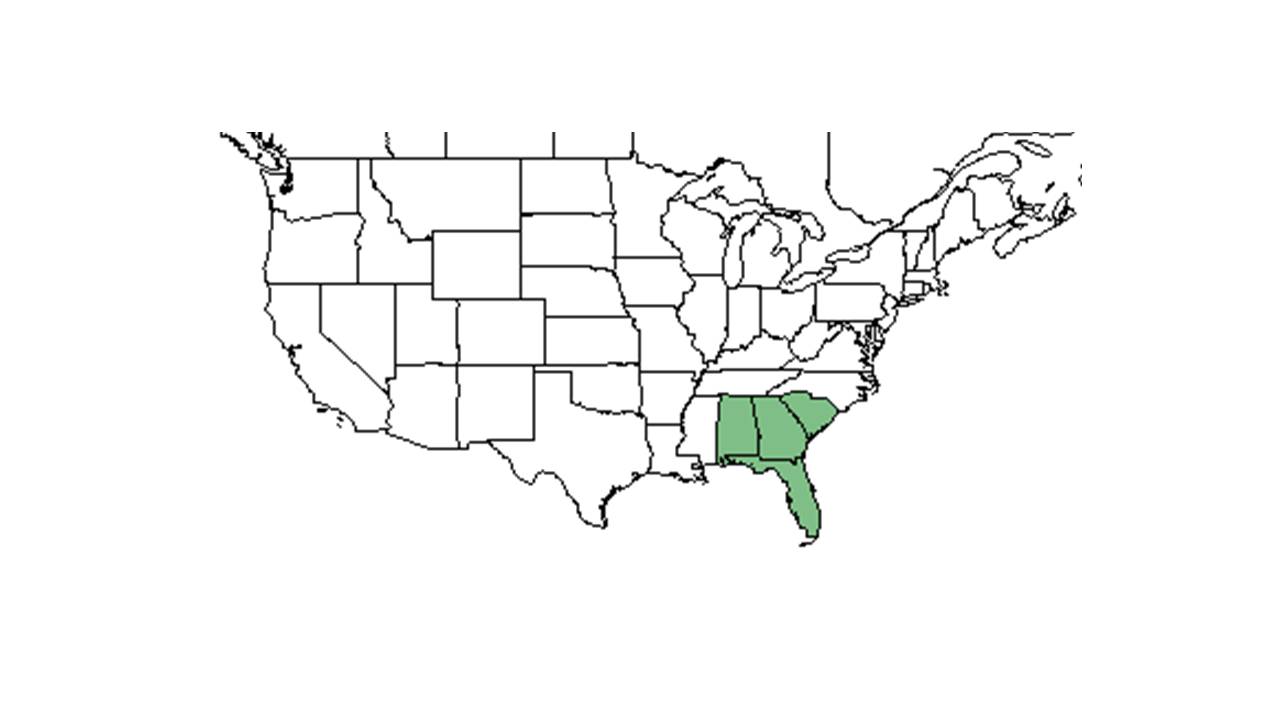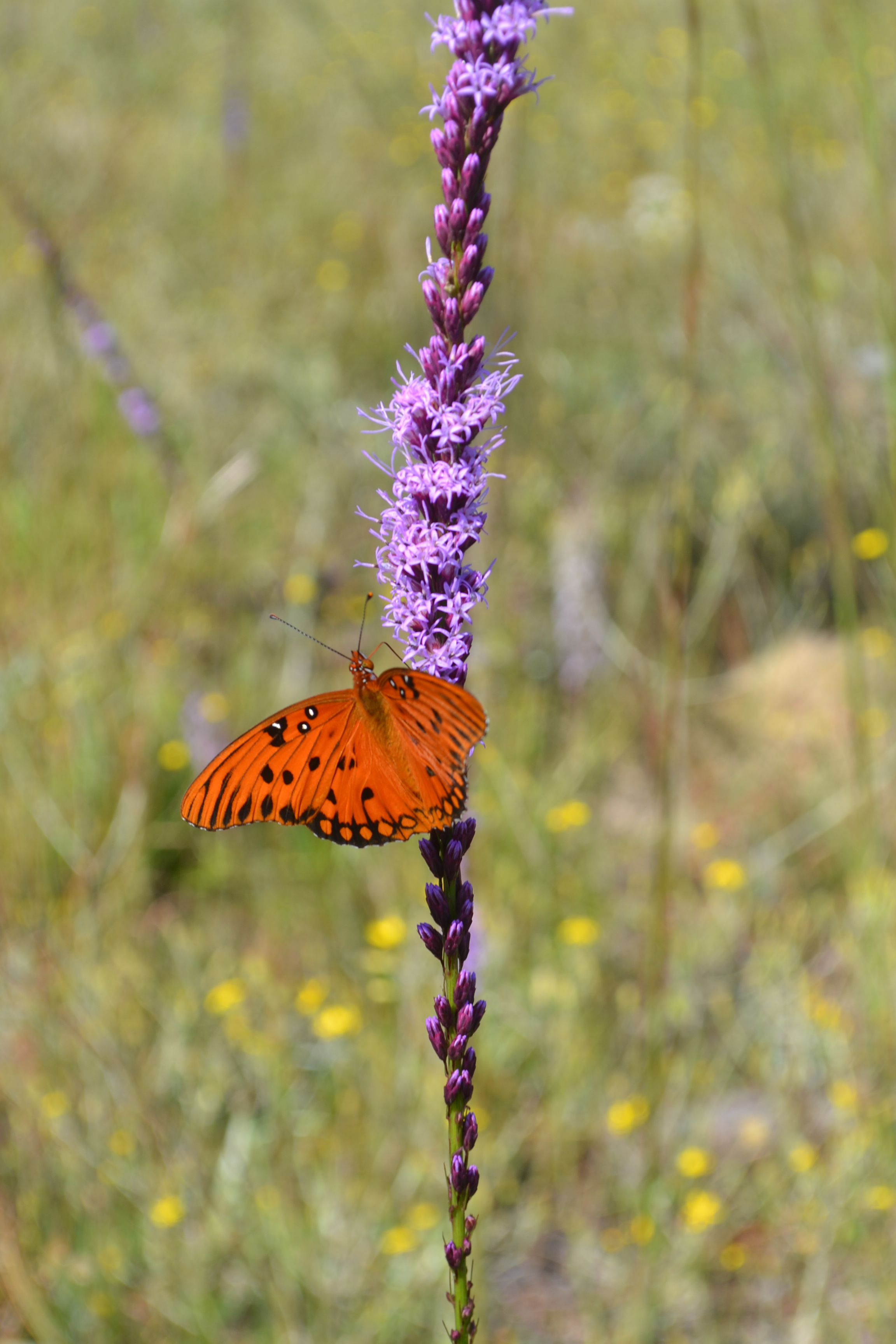Difference between revisions of "Liatris tenuifolia"
KatieMccoy (talk | contribs) |
KatieMccoy (talk | contribs) (→Seed bank and germination) |
||
| Line 38: | Line 38: | ||
===Seed dispersal=== | ===Seed dispersal=== | ||
===Seed bank and germination=== | ===Seed bank and germination=== | ||
| − | Fire improves seedling recruitment | + | Fire improves seedling recruitment (Whelan 1970). |
| + | |||
===Fire ecology=== <!--Fire tolerance, fire dependence, adaptive fire responses--> | ===Fire ecology=== <!--Fire tolerance, fire dependence, adaptive fire responses--> | ||
''L. tenuifolia'' responds positively to conditions following a burn by increased vegetative growth and flowering and typically blooms within a year or so following fire (Anderson and Menges 1997). There is an increase in growth and flowering in burned sandhill sites located in south-central Florida (Anderson and Menges 1997). It also has been found in burned and unburned patches of degraded longleaf pine sandhill (Heuberger and Putz 2003). | ''L. tenuifolia'' responds positively to conditions following a burn by increased vegetative growth and flowering and typically blooms within a year or so following fire (Anderson and Menges 1997). There is an increase in growth and flowering in burned sandhill sites located in south-central Florida (Anderson and Menges 1997). It also has been found in burned and unburned patches of degraded longleaf pine sandhill (Heuberger and Putz 2003). | ||
Revision as of 15:19, 17 September 2015
| Liatris tenuifolia | |
|---|---|

| |
| Photo taken by Gil Nelson | |
| Scientific classification | |
| Kingdom: | Plantae |
| Division: | Magnoliophyta - Flowering plants |
| Class: | Magnoliopsida – Dicotyledons |
| Order: | Asterales |
| Family: | Asteraceae ⁄ Compositae |
| Genus: | Liatris |
| Species: | L. tenuifolia |
| Binomial name | |
| Liatris tenuifolia Nutt. | |

| |
| Natural range of Liatris tenuifolia from USDA NRCS Plants Database. | |
Common name: shortleaf blazing star
Contents
Taxonomic notes
Description
A description of Liatris tenuifolia is provided in The Flora of North America.
Distribution
Ecology
Habitat
Habitats of L. tenuifolia include longleaf pine-turkey oak sand ridge, dry Quercus laurifolia hammock, scrub-oak ridge, sandhills, semi-boggy areas, wet pine flatwoods,course sand and scrub oak barren, and annually burned pinelands (FSU Herbarium). Human disturbed areas include moist loamy sand of roadside depression, dry sand of scrubby ridges along roads, bordering pine flatwoods along the road, sandy clearings, open fields, and on the edge of clearing banks of rivers (FSU Herbarium).
Soil types observed include moist loamy sand, dry sand, coarse sand, gravelly sandy soil, white sand, sandy loam, and sandy-peaty soils (FSU Herbarium). Availability of nitrogen, pH, organic matter, and inorganic nutrients such as (Ca, K, Mg, and P) have been observed to be concentrated at low levels in the soil (Anderson and Menges 1997).
Phenology
Flowers have been documented blooming in September through November (FSU Herbarium).
Seed dispersal
Seed bank and germination
Fire improves seedling recruitment (Whelan 1970).
Fire ecology
L. tenuifolia responds positively to conditions following a burn by increased vegetative growth and flowering and typically blooms within a year or so following fire (Anderson and Menges 1997). There is an increase in growth and flowering in burned sandhill sites located in south-central Florida (Anderson and Menges 1997). It also has been found in burned and unburned patches of degraded longleaf pine sandhill (Heuberger and Putz 2003).
Pollination
The following Hymenoptera families and species were observed visiting flowers of Liatris tenuifolia at Archbold Biological Station (Deyrup 2015):
Apidae: Apis mellifera, Bombus impatiens, B. pennsylvanicus
Halictidae: Agapostemon splendens, Augochlorella aurata, Augochloropsis sumptuosa
Megachilidae: Coelioxys mexicana, C. sayi, Megachile albitarsis, M. brevis pseudobrevis, M. brimleyi, M. petulans, M. texana
Sphecidae: Ammophila procera
Use by animals
Diseases and parasites
Conservation and Management
Cultivation and restoration
Photo Gallery
References and notes
Anderson, R. C. and E. S. Menges (1997). "Effects of fire on sandhill herbs: nutrients, mycorrhizae, and biomass allocation." American Journal of Botany 84: 938-948.
Deyrup, M.A. and N.D. 2015. Database of observations of Hymenoptera visitations to flowers of plants on Archbold Biological Station, Florida, USA.
Heuberger, K. A. and F. E. Putz (2003). "Fire in the suburbs: ecological impacts of prescribed fire in small remnants of longleaf pine (Pinus palustris) sandhill." Restoration Ecology 11: 72-81.
Reinhart, K. O. and E. S. Menges (2004). "Effects of re-introducing fire to a central Florida sandhill community." Applied Vegetation Science 7: 141-150.
